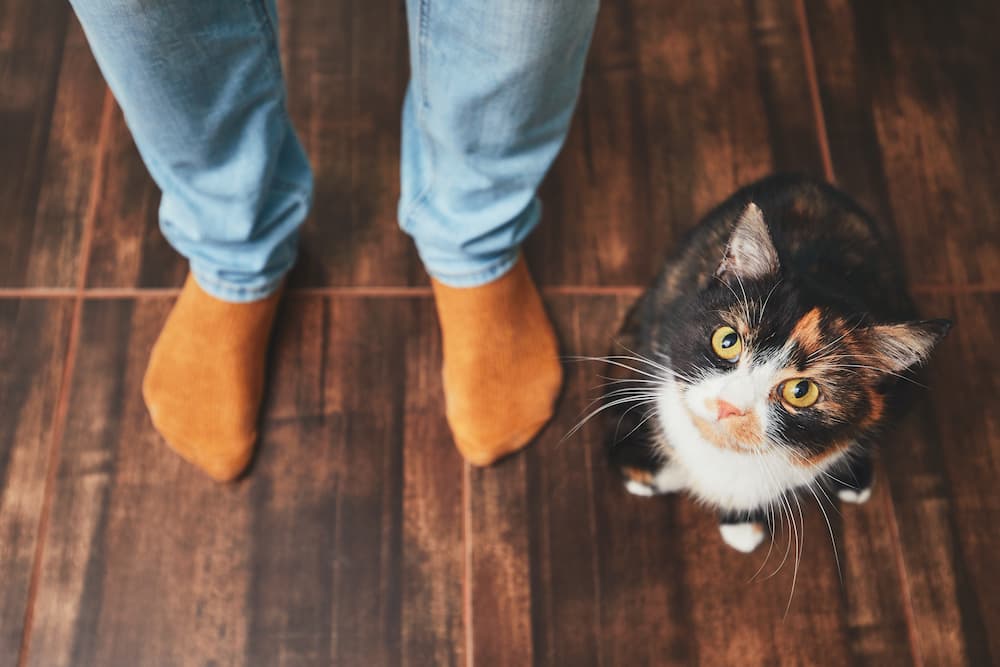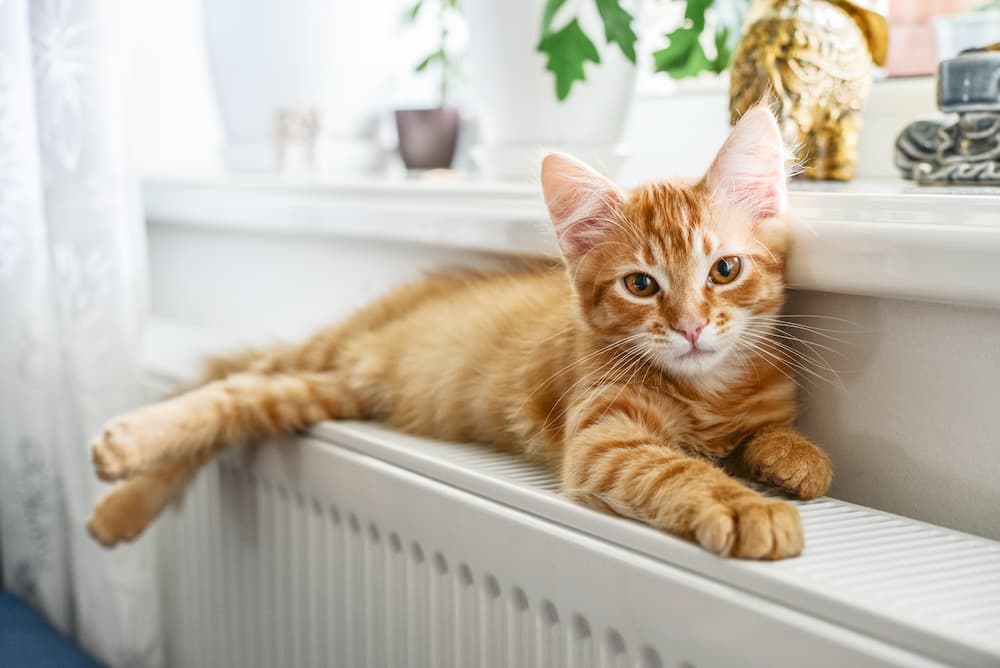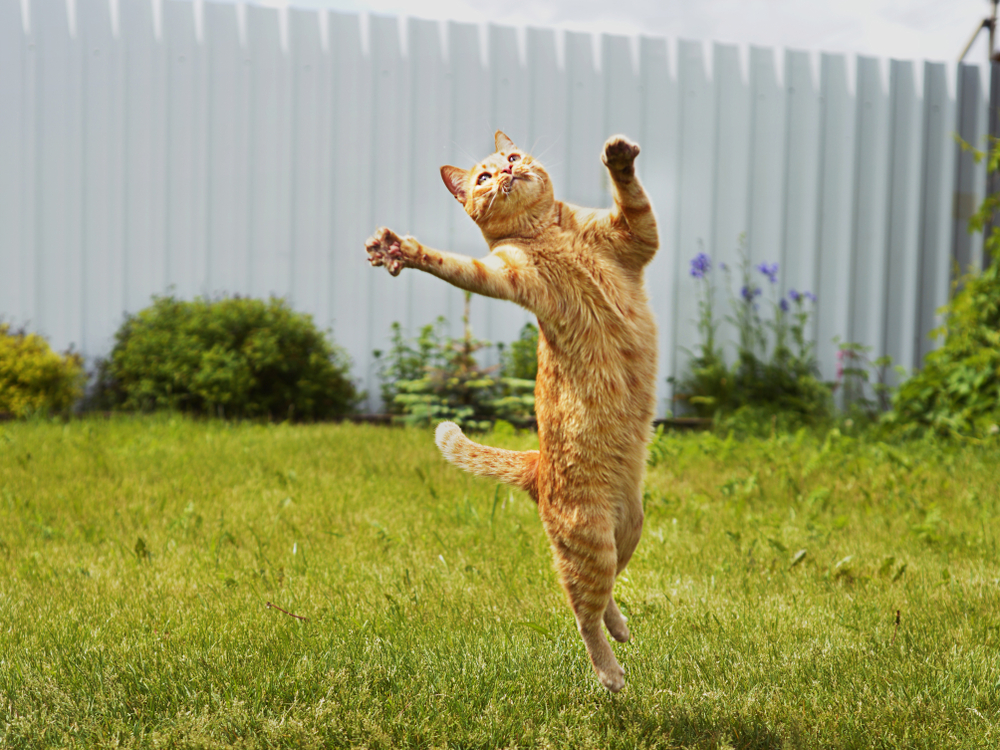In the mood for some amazing cat facts that will have you staring in awe at your feline friend? Okay sure, you already stare at them in awe, but now you’ll have even more of a reason.
In this list of mind-blowing cat facts, we’ve got secrets, science, tid-bits, and just plain weird pieces of information that you’ll want to share with every cat lover you know. And, full disclosure: one of them may make you want to sign up for a pet insurance plan to keep your curious kitty safe!

Cat facts about fascinating feline anatomy
#1: Cats have something in common with camels and giraffes
Side-by-side, camels, giraffes and cats have seemingly nothing in common. But once they start walking, you might notice the similarity!
All three animals—plus a select few others like elephants and bears—share a unique walking style: they move their legs on the same side at the same time. This is called a pacing gait and may provide cats with a more energy-efficient and low-impact way of getting around.
#2: There’s a reason cats get stuck in trees
Cats are amazing climbers. They can scale just about any wall, fence, tree, or trellis you put in their path. Why, then, do cats get stuck in high places so often?
Well, as it turns out, a cat’s anatomy is what leaves them high and dry. With hook-like claws that dig into bark and propel a cat upwards, felines can race up a tree with ease. It’s a brilliant way to outrun predators like dogs!
But, unlike true tree-dwellers like koalas, possums, and sugar gliders, cats need a non-vertical exit strategy on the way down. Expert kitty climbers will have the confidence to find their escape route, but many will opt to meow until their beloved human comes to their rescue.
#3: Cats have floating collar bones
Ever wonder what makes cats such great escape artists? For one thing, they have the advantage of free-floating clavicles.
Clavicles provide necessary structure and protection for cats to be able to climb, jump, and take down prey with their front legs. But, unlike humans, those collar bones also need to be flexible so that cats can wiggle into small spaces. In fact, it’s one of the reasons the myth that cats have nine lives has been around for so long; this clever escape tactic allows them to disappear and hide out when they need to.
If we may, we have a fun dog fact to squeeze into our list of cat facts: Because dogs don’t climb, fly or lift heavy objects, they don’t have clavicles. Rather, they have little bits of cartilage in the place of collar bones that allow them to run and change directions quickly… Back to the cat facts!
#4: Cats can rotate their ears 180 degrees
Unless your cat is in a deep dreamy sleep, sneaking up on them is nearly impossible. It can feel like they have eyes on the back of their furry little heads!
In reality, cats have something much more effective: a set of independently rotating ears. With 32 muscles dedicated to those swivelling ears, you can bet that they hear everything, no matter how quietly you tip toe.
#5: Indoor cats and outdoor cats have different ways of seeing the world
Okay, sure, a feral cat and an indoor cat are going to have some differences in opinion. But that’s actually not what we mean, here. Cats that spend the majority of their time inside versus outside tend to have different vision, entirely!
Feral cats are more likely to be farsighted while indoor cats tend to be nearsighted. That’s likely an adaptation to their environment. Feral cats need to keep an eye on the horizon, while indoor cats can focus on what’s nearby, like their favourite human or the food bowl.
And, if you’re looking for even more vision-based cat facts, both indoor and outdoor cats are unable to see objects very close to them. Anything closer than about 30cm goes out of focus, and their whiskers and incredible sense of smell take over.
 The cat facts behind Fluffy’s weird behaviours
The cat facts behind Fluffy’s weird behaviours
#6: There are a few theories about why cats are so strange about water
All over the internet, you’ll find videos of cats dipping their tiny toe beans into glasses of water, the kitchen sink, and even their own water bowl. Why do they do this?
There are a few fascinating theories. One goes back to our last cat fact about cat vision. Because cats can’t see things as clearly up close, they may use their paws to gauge the location of the water line. This keeps them from doing an uncomfortable face dive into their water bowl.
Another reason why cats may have a mini splash around is that it reminds them of moving water. Cats are naturally disposed to avoid stagnant water, which is more likely to have bacteria growth. Are our cats taking care of us by sticking their paws in our drinking water and preventing it from sitting still for too long? Or are they just comforted by moving water? We may never know.
The final theory about why cats put their paws in water is that it keeps them safe from predators. If you’ve ever experienced the feeling of being so involved with a meal that you forgot about the world around you, you can understand why a cat may not want to be face first in their water bowl. By dipping their paw in the water, they can stay alert and ready to make a run for it.
#7: Cats have a stealing streak
You read that right. Some cats are furry little thieves, and they’re not ashamed in the least. So, if you feel like you’ve been losing your mind because little things are going missing around the house, you might want to sniff around for where your cat buried the treasure.
Cats typically stick with small items like paper clips and hair elastics that they can easily carry in their mouths and hide for later. But, in one New Zealand case, a cat stole 11 pairs of underwear and 50 socks from people around the neighbourhood.
Why do they do it? It could be boredom, instinct, or attention-seeking behaviour.
#8: The wiggle-bum serves a purpose
Everything about your cat’s hunting position is maximised for power and precision. Their saucer-plate eyes take in as much light as possible to better see their prey. Their ears flatten for camouflage and speed, and their whiskers move towards the target to pick up on subtle changes in the air.
Then, your cat does something that looks downright silly: they wiggle their little bums! Are they just trying to make us laugh?
Experts suggest that this behaviour could be a way for cats to get better traction right before they go in for the kill. Wiggling their bum helps to ground down their claws in the earth, creating friction for forward momentum and lowering the chance of slipping.
If you have hardwood floors, your furry friend’s wiggle bum might be in vain. But it’s an important part of their evolution!
#9: Contrary to popular belief, cats are excellent communicators
Non-cat people tend to see felines as inscrutable or hard to read. But in fact, cats have a range of vocalisations that help them communicate with their favourite people.
Studies in the past have pin-pointed 21 different domestic cat vocalisations, but new research from 2020 suggests that that’s probably an underestimate. In fact, cats may use subtle adjustments in tone, frequency and duration in order to convey different messages. And feral cats and domestic cats each have a set of vocalisations to match their unique environment.
Those who spend enough time around cats will enjoy the full range of chatter, meows, purrs, and chirps their cat has to offer.
Which of these cat facts surprised you most?
Cat lovers and doting Pet Sitters already know that our feline friends are filled with weird and wonderful secrets. From quirky behaviours to fascinating features, it’s hard to say which of these cat facts is the most surprising!

